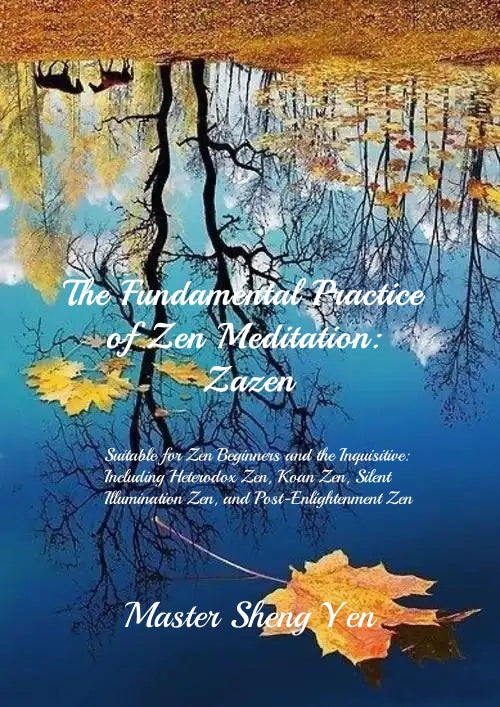The Fundamental Practice of Zen Meditation Zazen
The Fundamental Practice of Zen Meditation Zazen
Couldn't load pickup availability
This book is suitable for scholars interested in Zen meditation, those new to Zen practice, and individuals seeking clarity on Zen methods. It is a compilation of Master Sheng Yen's lifelong teachings on Zen meditation, encompassing foundational sitting meditation techniques, including adjustments for the body and mind, specific guidance on leg, spine, hand, shoulder, tongue, mouth, and eye positioning, walking meditation methods, breath regulation, and mental adjustments. It provides detailed descriptions of Heterodox Zen, Zen sitting meditation, Silent Illumination Zen, Koan Zen, and post-enlightenment sitting meditation. It serves as a specific guide to meditation methods and is an essential book for practitioners of Zen meditation.
Excerpts from the book:
Hui-neng (638-713), who succeeded Hung-jen as the Sixth Patriarch, was not an advocate as sitting as the path to enlightenment. With him, we have a distinction between tso-ch’an which attains enlightenment through sitting, and tso-ch’an which attains enlightenment without sitting. Hui-neng had a different interpretation of what tso-ch’an means. He said that when there is no mind, or no thoughts arising, that is called “sitting” (tso). When you see internally that the self-nature is not moving, that is Ch’an.
This was different from the sitting tso-ch’an of Bodhidharma. The Sixth Patriarch took his inspiration from the Samadhi of One Act, described in the Manjusri Sutra mentioned above. The method is to put your mind steadfastly on the One Dharma Realm , in which there is no differentiation into forms. Quoting from the Vimalakirti Sutra , he also said, “The straightforward mind is the Path.” Its meaning is that all forms are equivalent to one form. Any time, any place, whether walking, standing, sitting or lying down, there is no situation that is not an opportunity to practice tso-ch’an. In this view sitting was not only not necessary, but could be a hindrance.
Basic Methods of Zazen Meditation: Zen Mind, Beginner's Mind
Regulating the Mind by Counting the Breath
Regulating the Mind by Watching the Breath If your wandering thoughts are minimal, and you can maintain the count without losing it, you can drop counting and just observe your breath going in and out. Keep your attention at the tip of your nose. If, without any conscious effort, your breathing naturally descends to your lower abdomen, allow your attention to follow your breathing there. Do not try to control the tempo or depth of your breathing: just watch and follow it naturally. A less strenuous method, also conducive to a peaceful mind, is to just keep your attention on the breath going in and out of your nostrils. Again, ignore wandering thoughts. When you become aware that you have been interrupted by thoughts, just return to the method.
Breath Regulation in Zen Meditation
Regulating the breath is very simple. It’s just your natural breathing. Do not try to control your breathing. The breath is used as a way to focus, to concentrate the mind. In other words, we bring the two things ─ regulating the breathing and regulating the mind ─ together.
Silent Sitting Zen Meditation
He describes “silent sitting” thus: “Your body sits silently; your mind, quiescent, unmoving. This is genuine effort in practice. Body and mind are at complete rest. The mouth so still that moss grows around it. Grass sprouts from the tongue. Do this without cease, cleansing the mind until it gains the clarity of an autumn pool, bright as the moon illuminating the evening sky.
Meditation opens the wisdom, and wisdom serves life
- The central teaching of general prajna is that there is no self.
- In absolute contemplation, without imposing one’s preference.
- Absolute contemplation is madhyamika-realizing emptiness to achieve liberation.
- The paramitas are antidotes for mental afflictions.
- The cure for greed and miserliness is generosity
- When you think in terms of real and false, dropping and seeking, you are discriminating.
- When greed, aversion, and ignorance disappear, afflictions also disappear.
- Where there is prajna, there is driyana; where there is dhyana, there is prajna.
Share


